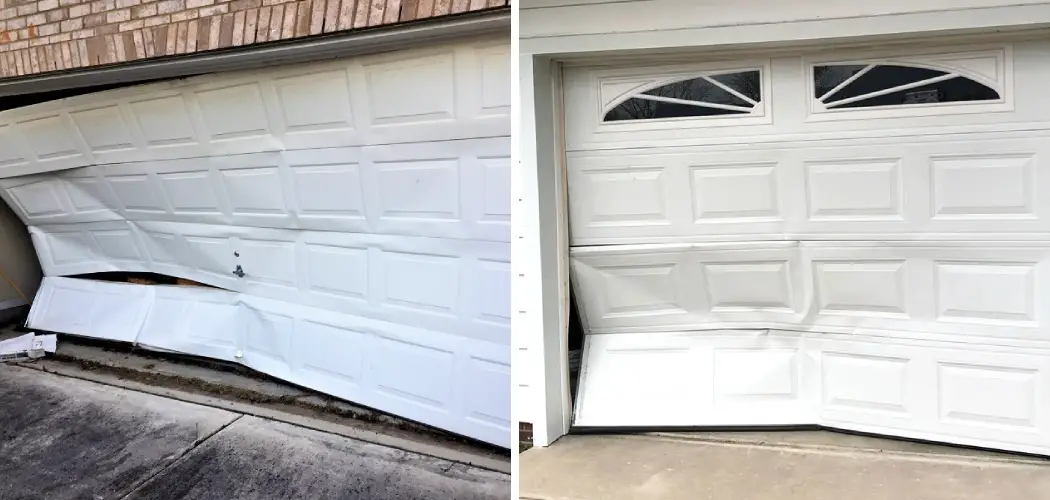Bent garage door panels can be a major problem as they can interfere with the proper functioning of your garage door. If the panel is bent, it will cause the door to stick when opening or closing and may even cause damage to other parts of the unit. Learning to fix bent garage door panels is important to prevent further problems from developing.
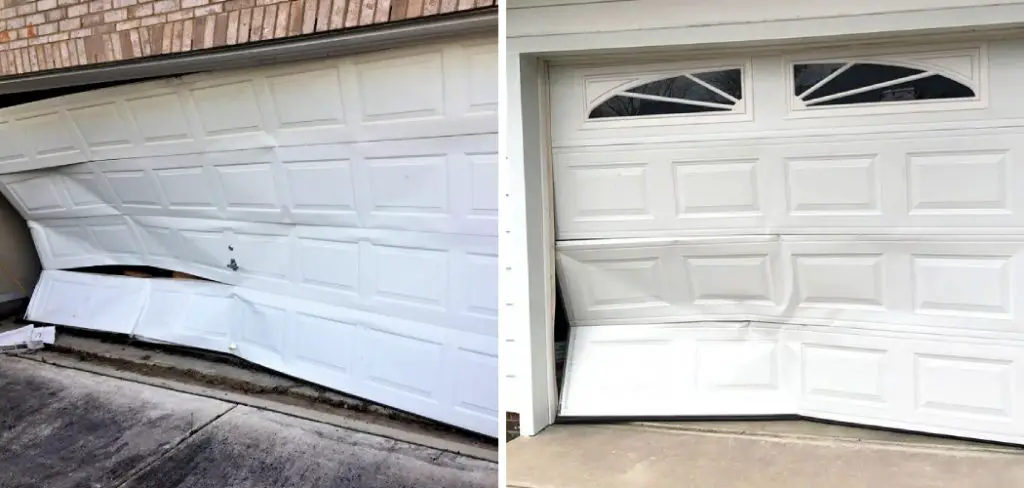
The most common cause of a bent garage door panel is when it is struck by a vehicle such as a car, truck, or SUV. When the panel is hit with enough force, it can bend outward, causing the door to jam when trying to open or close.
One of the major advantages of fixing a bent garage door panel is the cost. Fixing a bent panel can be done relatively cheaply and easily, often requiring only basic tools and minimal time. In addition, repairs are usually much cheaper than replacing an entire garage door or hiring professionals to do the job. In this blog post, You will learn in detail how to fix bent garage door panel.
Summary: Garage door panels can become damaged or bent over time due to a variety of causes, such as weather exposure, wear, and tear, improper installation, or accidents. Fixing a bent garage door panel requires identifying the specific cause of the damage and taking the necessary steps to repair it. Depending on the severity of the damage, repairs may involve replacing the entire panel or simply replacing the affected area.
Materials & Tools You Will Need
- Adjustable wrench
- Screwdriver
- Hammer and small chisel
- Level or ruler
- Electric drill with a selection of drill bits (including masonry bit for brick)
- Masonry screws
- Wood screws
- Replacement panel sections (optional)
- Locking pliers
- Pliers
Step-by-Step Processes for How to Fix Bent Garage Door Panel
Step 1: Inspect the Bent Door Panel
Before you start the repair process, inspect the bent door panel and check for any other signs of damage. Make sure that all fasteners are in place, and look for signs of rust or corrosion on the hinges or tracks. Start by disconnecting the garage door opener from its power source, and then pull the door away from its tracks as far as possible.
If necessary, use a pair of locking pliers to remove any loose bolts that are holding it in place.
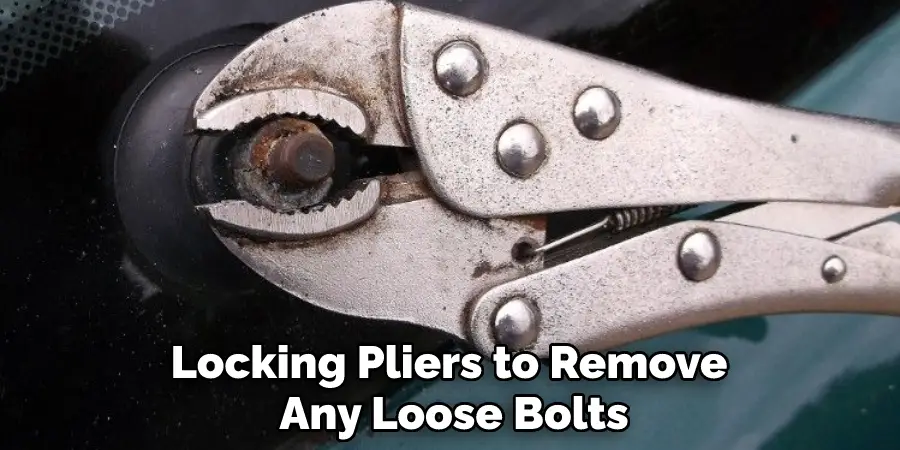
Step 2: Remove the Bent Door Panel
Carefully remove the bent door panel from its track, paying special attention to any parts that may be stuck or difficult to access. Once you have removed the panel, set it aside safely. Measure out two pieces of wood that you will use to replace the bent door panel. Depending on what is most suitable for your situation, you can use plywood or hardboard for this purpose.
Cut the pieces out with a jigsaw or circular saw, ensuring that they are the same size as the original panel and fit snugly into each end of the track.
Step 3: Install the Replacement Panels
Using screws and a power drill, install the replacement panels onto the track. Make sure to tighten them securely before you move on to the next step. Securely fasten all of the nuts, bolts, and other fasteners that hold the track assembly together. This will ensure that the entire door is safely and securely held in place.
Step 4: Install a New Roller Assembly
Replace any worn or faulty roller assemblies with new ones, and make sure to align them properly into the track. It’s important to do this step correctly, as it helps to prevent further damage to the door panel. Garage doors rely on springs to help them move up and down, so replacing any worn or broken ones with new ones is important.
Make sure to use the right spring type for your door, as some types are designed for specific models.
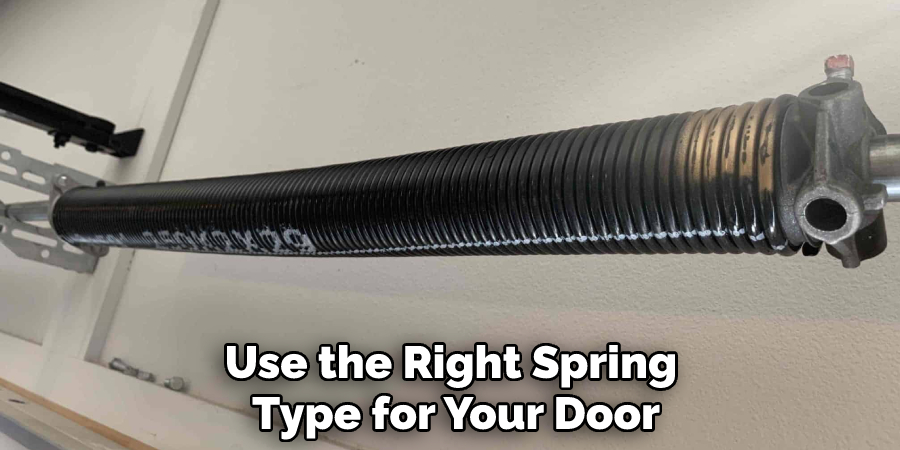
Step 5: Attach the Hinges and Tracks
Securely attach the hinges and tracks to the door frame, ensuring they are securely fastened. This will ensure that the door can open and close smoothly without any problem. Reach your garage door opener to the door, ensuring that all parts are connected properly. Once you have done this, plug it back into its power source and test it out to ensure everything is working as expected.
Step 6: Test Your New Door Panel
Finally, open and close your door several times to ensure it operates correctly. If everything is working as expected, your door should now be safe, secure, and functional again. By following these steps, you can easily repair a bent garage door panel and get it back into proper working order.
8 Precautions for How to Fix Bent Garage Door Panel
- Ensure the garage door is disconnected from the power source before beginning repairs. It’s important to ensure that nobody can open or close the door while you are working on it.
- Wear protective glasses and gloves when handling the panel that needs to be fixed, as there may be sharp edges.
- If the bent portion of the panel is metal, use a hammer to tap it back into place gently.
- If the panel is made from wood or composite material, use a crowbar and two-by-four block to pull it back into its original shape.
- To keep the panel in place while it dries, use clamps to secure it.
- Before tightening the panel with screws, make sure to fill any gaps or holes that may have been created during repairs.
- Check the alignment of the garage door track and adjust it if necessary. If it is not aligned properly, the door won’t be able to close smoothly.
- Once the panel is secure and all repairs have been made, you may reconnect the power source to your garage door opener and test it out to ensure it’s working properly.
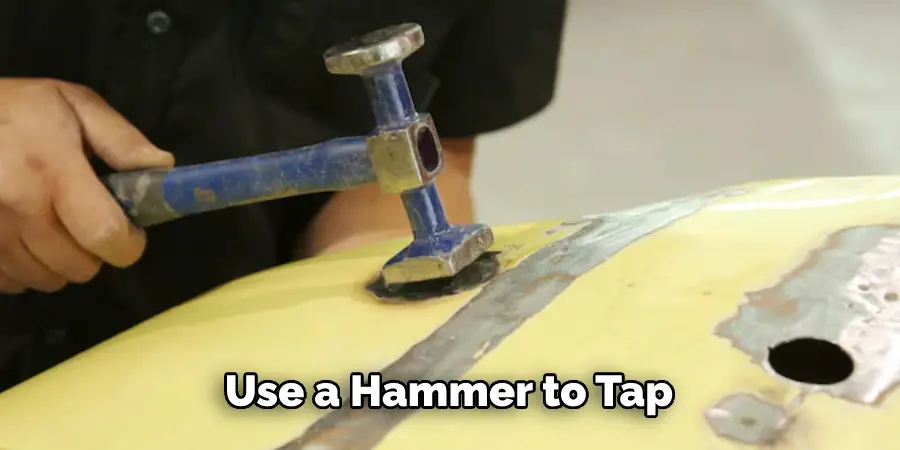
By following these eight precautions, you can easily fix a bent garage door panel without an issue. Doing so will help ensure the efficiency and longevity of your garage door.
What Are the Risks Associated With Attempting to Fix a Bent Garage Door Panel Yourself?
- Working with a garage door can be dangerous and is not recommended for the average homeowner. It is important to understand the risks associated with attempting to fix bent garage door panels yourself.
- One of the biggest risks when attempting to repair a bent garage door panel is a personal injury due to the heavy weight of the door. Additionally, the powerful springs and motors used to lift the door can be dangerous if not handled properly.
- In addition to potentially injuring yourself, working with a garage door panel can also damage your car or property if you are not careful. Working on such a heavy piece of machinery can cause it to lose balance and shift unexpectedly, causing the door to hit an object or person nearby.
- Finally, attempting to repair a bent garage door panel yourself can put your home at risk if you cannot properly troubleshoot and diagnose the problem. Improperly fixing a problem may cause bigger issues, such as decreased security, noise, or even structural damage down the road.

How Can You Prevent Future Damage to Your Garage Door Panel?
- Keep the garage door springs in good repair. Springs that are too weak or worn can cause excessive stress on the door panel, resulting in bending and warping. Check the springs regularly, and replace them when needed.
- Don’t attempt to manually open or close your garage door if it becomes stuck or won’t open and close properly. If the door is stuck, contact a professional for help rather than forcing it open yourself.
- Be mindful of objects around the garage that could cause damage to the door panel if they get in their way as it opens and close. Move all items away from the entrance to prevent damage to the panel.
- Check for any gaps or holes in the exterior of your garage where animals and insects could get inside and cause damage to the door panels. Seal any openings with caulk or weatherstripping.
- Call a professional if you notice any signs of wear or damage on your garage door panels, such as dents or sagging, as this could be a sign that the panels are bent and need to be replaced.
By taking these steps, you can help prevent future damage to your garage door panel and keep it in good working order for years to come. With regular maintenance, you’ll be able to enjoy a dependable and safe garage door for a long time.
How Can You Maintain Your Repaired Garage Door Panel to Keep It From Bending Again?
Once you have repaired the bent garage door panel, it is important to maintain it so that it does not bend again. Here are a few tips on how to keep your fixed panel in great condition:
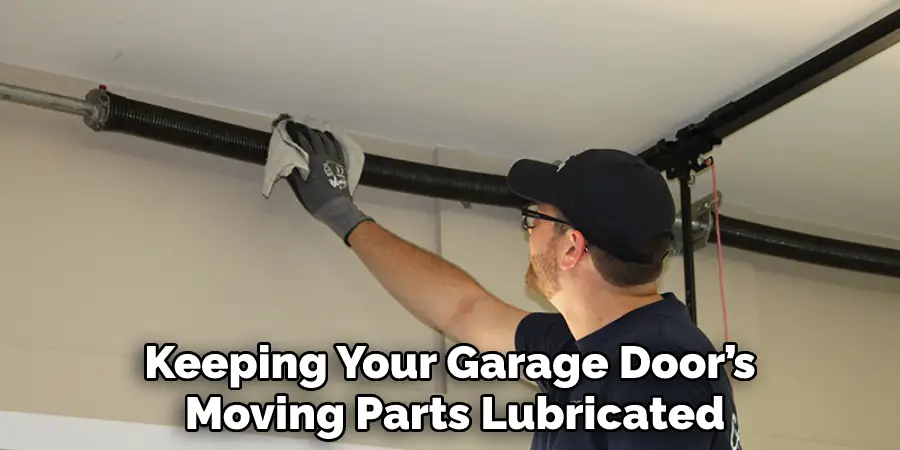
- Lubricate the Moving Parts: Keeping your garage door’s moving parts lubricated will ensure smooth operation and help reduce friction and wear.
- Inspect the Door Regularly: It is important to inspect your garage door on a regular basis for signs of damage, such as bent panels or loose hardware. If you notice any problems, it is best to contact a professional right away.
- Repair Nicks and Dents: You should also check your garage door panels for any nicks or dents that may have occurred over time. If you find any, use a rubber mallet to hammer out the dent gently.
- Replace Worn Parts: If any of your garage door’s hardware has worn or damaged, be sure to replace it immediately. This will help keep your garage door working properly and prevent it from becoming bent again.
By following these tips, you can ensure that your fixed garage door panel stays in great shape and does not become bent again. If a problem persists or if you need assistance, contact a professional for further guidance.
Conclusion
In conclusion, fixing a bent garage door panel can be intimidating. However, if you understand the basics of alignment and installation, you can repair your garage door panel in no time. Always wear safety glasses when working on your garage door, and ensure that all hardware is securely fastened before attempting to adjust any components.
If you are still unsure how to fix your garage door panel, you can always contact a professional for help. I hope this article has been beneficial in learning how to fix bent garage door panel. Make Sure the precautionary measures are followed chronologically.

